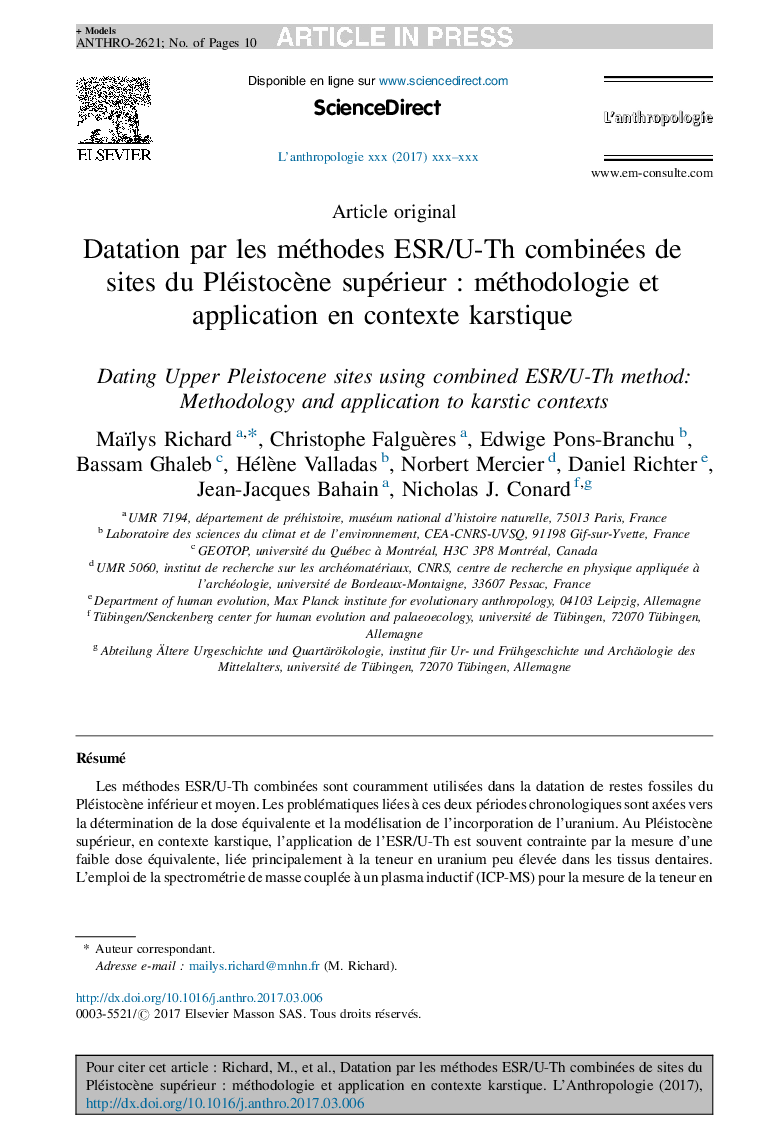| Article ID | Journal | Published Year | Pages | File Type |
|---|---|---|---|---|
| 5111846 | L'Anthropologie | 2017 | 10 Pages |
Abstract
Combined ESR/U-Th methods were principally used to date fossil teeth from Lower and Middle Pleistocene deposits. For samples of such ages, methodological issues are focusing on the determination of the equivalent dose and the modelling of uranium uptake. For Upper Pleistocene sites located in karstic settings, the application of ESR/U-Th is usually constrained by the measurement of a low equivalent dose, which is correlated to a low uranium content in the dental tissues. The use of Inductively Coupled Plasma-Mass Spectrometry (ICP-MS) for the measurement of U-content and isotopic ratios (234U/238U and 230Th/234U) is necessary to determine the dental tissue dose rates. Ages thus primarily depend on the gamma dose rate, and sometimes even on the cosmic dose rate as well, which can make up to 40% of the annual dose in very low dose rate contexts. In that case, in situ measurements, using dosimeters and/or field gamma-ray spectrometer, and 3D modelling of the cosmic dose received by the sample are essential for an accurate estimation of the annual dose and the age calculation. The application of ESR/U-Th requires both field and laboratory measurements, and should not be undertaken without a good knowledge of the sample origin and its geological context. Moreover, the time range of applicability of ESR/U-Th (between around 2 Ma and 30 ka) and Radiocarbon (which reaches its limits around 45-50Â ka) overlap for about 15-20Â ka. This allows the comparison of results obtained by these two methods for the same context in order to obtain a more precise chronological framework for Upper Pleistocene sites.
Related Topics
Social Sciences and Humanities
Arts and Humanities
History
Authors
Maïlys Richard, Christophe Falguères, Edwige Pons-Branchu, Bassam Ghaleb, Hélène Valladas, Norbert Mercier, Daniel Richter, Jean-Jacques Bahain, Nicholas J. Conard,
